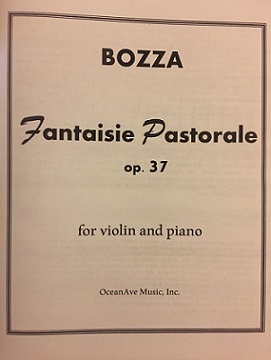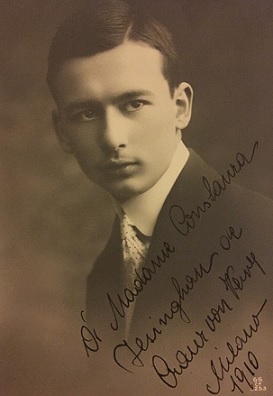Violin History
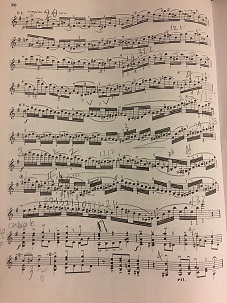
VIOLIN HISTORY | HOME
For the past 15 years or so, I have infrequently collected a good number of what I call violin artifacts - museum pieces, if you will, that encompass 160+ years of classical violin history. I have acquired these from many different people and places, including a few who were good enough to sign for me via the postal service. A few of these items have highly interesting stories behind them. Sadly, the asking prices of these things have skyrocketed in recent years, although their fair market value based on their lifetimes and the relative scarcity has not changed [very much]. **What you see below are absolutely not photocopies!!**
Have a look at this mini museum! And if you happen to know of any pieces that I might do well to acquire, please email me at socalviolin1985@gmail.com.
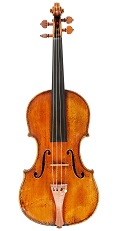
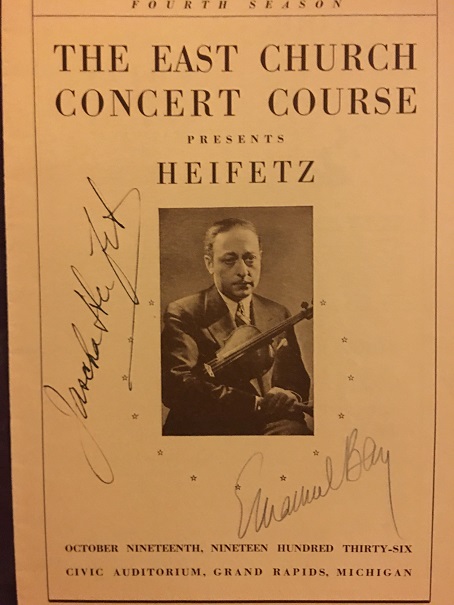


Jascha Heifetz (1901-1987) emigrated to the US in 1917, from St. Petersburg, Russia, where he graduated from the Imperial Conservatory before he was even 10 years old. He became a US citizen in 1925. The rest, as they say, is...not history so much as a revolution. The violin world looked completely different, and was forever changed when Heifetz's career began. Violinists much older and already seasoned veterans of the concert stage all but lost their careers to him. From the time of his Carnegie Hall debut in October 1917, until the late 1950s, he concertized all over the world and in the US, was for many years among, if not the, highest-paid classical music performer. This program is from a recital given in 1936 with his long-time pianist, Emanuel Bay (1895-1964), who was also Russian.
(Acquired 2008)
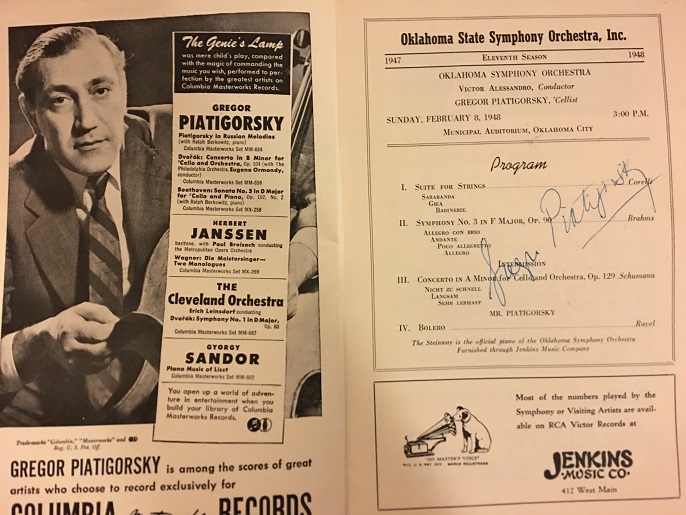
Gregor Piatigorsky (1903-1976) maintained friendships with two of the greatest violinists of the 20th century, Heifetz and Milstein, while himself being one of the greatest cellists.
(Acquired 2015)
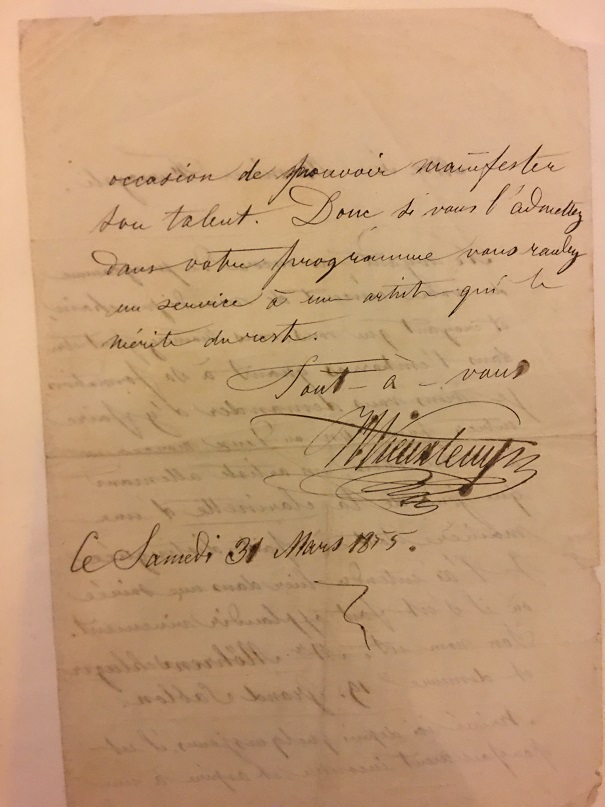
Belgian violinist-composer Henri Vieuxtemps (1820-1881) not only was a virtuoso, but he had a substantial oeuvre for the instrument and also some pieces for cello. In fact, Hector Berlioz said, "If Vieuxtemps were not a violinist, he would be known as an important composer." His best-known composition, written circa 1859 as a conservatory examination piece, was the Fifth Violin Concerto in A minor, op. 37. Indeed, over the course of one movement, which includes a most profound cadenza, every aspect of violin technique is covered. This 1855 letter was to a friend, asking the friend to help yet another friend, "and if you do so, it would be as if you were helping me." A glorious and unmistakable signature - very nicely spelled out, as more people did in those days versus simply dashing it off.
(Acquired 2008)
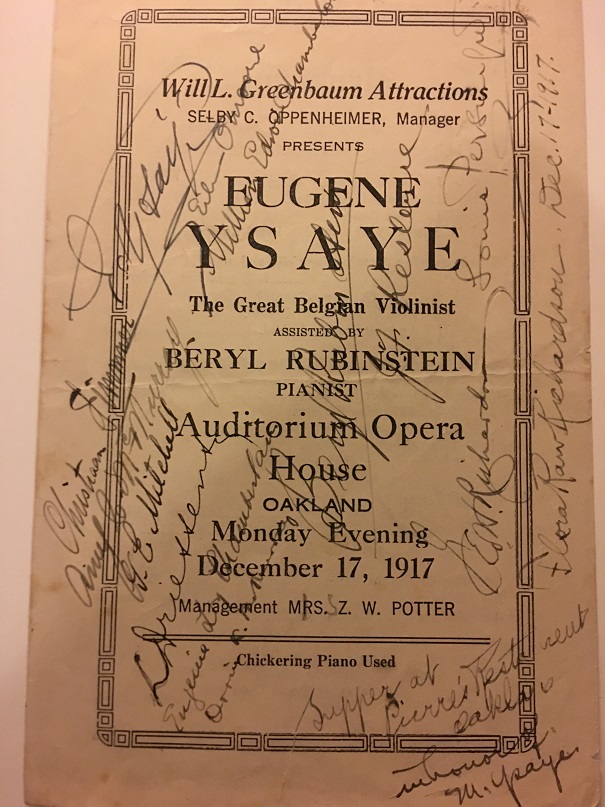
Belgian violinist-composer Eugene Ysaye (1858-1931) not only was a virtuoso, but like his countryman and contemporary Vieuxtemps, he also had a substantial oeuvre for the instrument. His six sonatas for violin alone are mammoth, and an important part of the violin literature. He was also the inspiration for some pieces written by bigger composers such as Chausson, who dedicated the "Poeme" to him, which was somewhat derived from Ysaye's earlier "Poeme Elegaique", a seldom-heard but heartwrenchingly beautiful piece (played with the G string tuned to F.) This 1917 San Francisco California concert program was also signed by Ysaye's wife, plus the pianist Beryl Rubinstein and violinist Louis Persinger, who lived in the area and later trained such giants as Isaac Stern, Yehudi Menuhin, and Ruggiero Ricci.
(Acquired 2018)
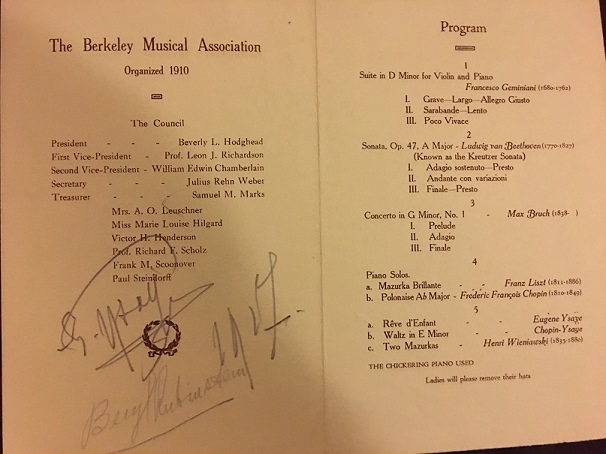
Another Ysaye-Rubinstein program. Note the programming of the Bruch Violin Concerto - it was customary to put concerti on recital programs in those days. Also note that Bruch was still living in 1917!
(Acquired 2008)
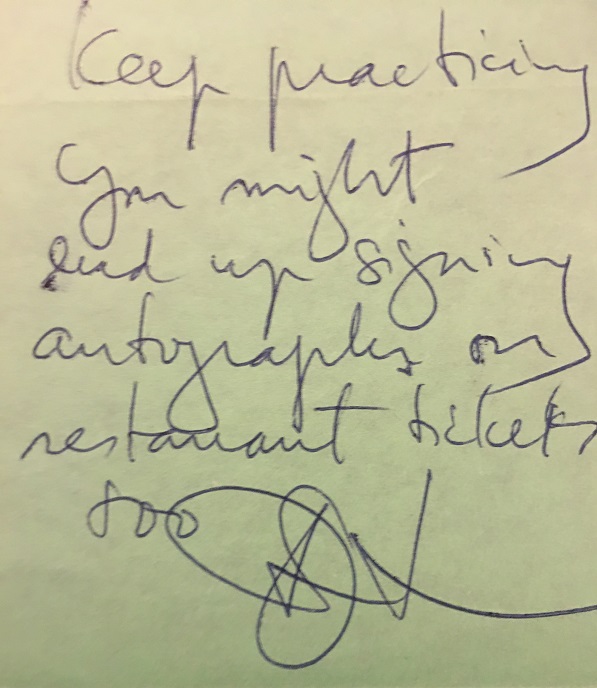
Sergiu Luca (1943-2010, Romanian) was a great pedagogue of the violin and chamber music. In 1965, he was selected by Leonard Bernstein to perform the first movement of the Sibelius Violin Concerto on one of the long-running televised Young People's Concerts programs. Although he spent a lot of his career in Europe, he was a distinguished Professor at Rice University in Texas and founded two highly acclaimed music festivals in the state of Oregon - Chamber Music Northwest in Portland (circa 1970, it continues today) and the Cascade Head Music Festival in Lincoln City on the Oregon coast. Mr. Luca was a friend of a family friend who owned a restaurant. He signed this in the restaurant for me.
(Acquired 1993)
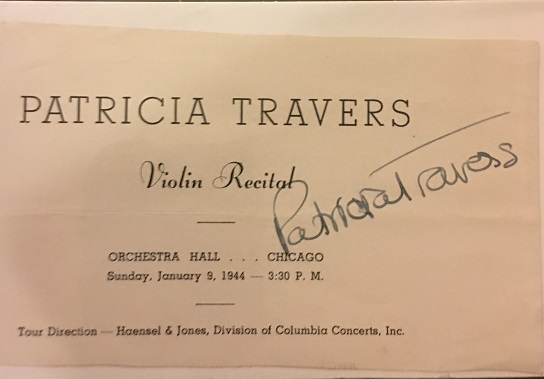
Patricia Travers (1927-2010) was on a path to becoming one of the greatest violinists of her time. She performed for kings, queens, overseas and at home. She was born in New Jersey but by the time she was a teenager, she performed with all the biggest orchestras in the world. Sir John Barbirolli, Lorin Maazel, and many other A-list conductors were among her collaborators. She even appeared in a feature film called "There's Magic in Music", and in the newsreels that were broadcast in movie theaters prior to the feature films. One of her greatest achievements was recording the Sonata #2 for violin and piano by Charles Ives at about age 20, a work that requires a refined musicality. For reasons unknown, she stopped playing at age 24 in 1951. She refused to discuss her career much after this. Her Stradivarius and Guarnieri violins were sold not long after (one of these was in turn sold to Joshua Bell by another party later and when asked if he was aware of Miss Travers, he said, "no, I've never heard of her.") Several years before she passed away, she finally confessed to her lawyer that she had been a virtuoso. She apparently still played, but according to the lawyer, "the only violin at the time she died was not a valuable one."
(Acquired 2019)
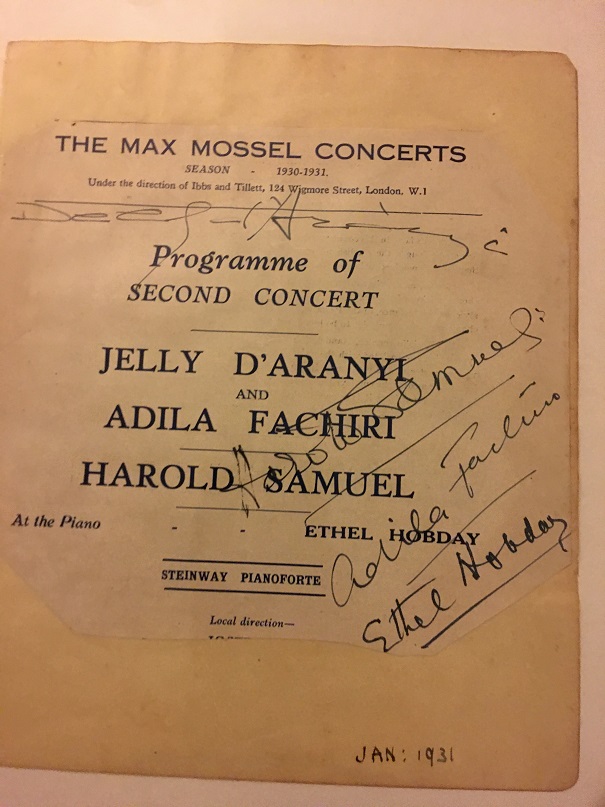
Adila Fachiri (1889-1962) and her sister Jelly d'Aranyi (1893-1966) were a well-known violin duo who toured extensively, mostly in Europe, where they lived. They were the grand-nieces of Joseph Joachim. d'Aranyi was the dedicatee of one of the most popular pieces in the violin repertoire, "Tzigane" by Maurice Ravel. Interestingly, they both lived for 73 years and died 4 years apart, the exact difference in their ages.
(Acquired 2009)
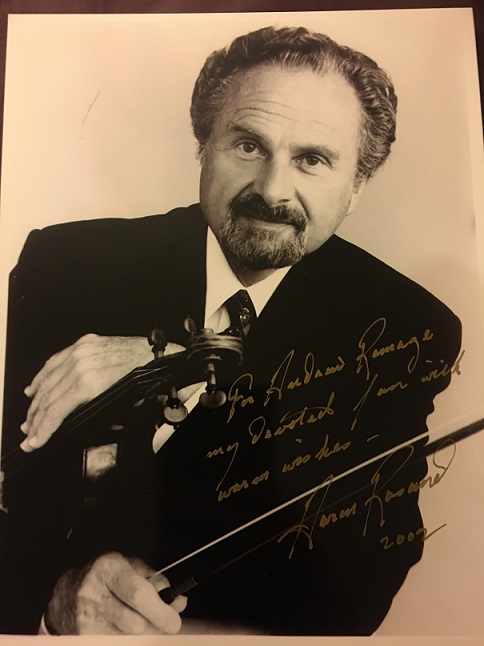
Aaron Rosand (1927-2019) was one of the greatest violinists of the 20th century although he seldom was acknowledged as such. As I have always said, "nobody could turn a phrase, or shape a phrase, like Aaron Rosand." Although a concert performer and recitalist, he also worked for CBS, playing the violin solos on shows featuring Frank Sinatra and others. One reviewer said, "If you never heard any other recordings but Rosand's, you wouldn't be missing much" and another said, "If Brahms had known Rosand, he may very well have written the three Violin Sonatas for him."
(Acquired 2002)
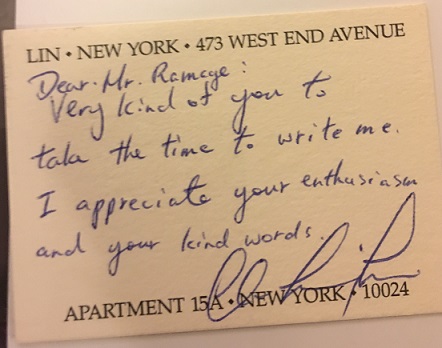
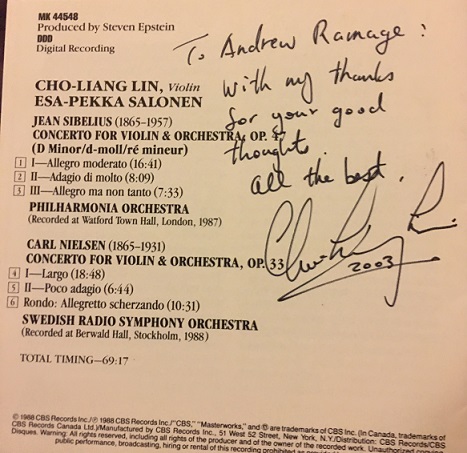
Cho-Liang "Jimmy" Lin is one of the great performers and recording artists of our time. He was born in Taiwan and came to the US to study at the Juilliard School, where he now teaches. His performances and recordings are consistently outstanding, and all feature a characteristic dash and vigor. My favorite recording of his, to date, is the Sibelius Concerto, recorded in 1987 when he was but 27...usually a little young to have a complete understanding of this work but he understood it I think.
(Acquired 2003)
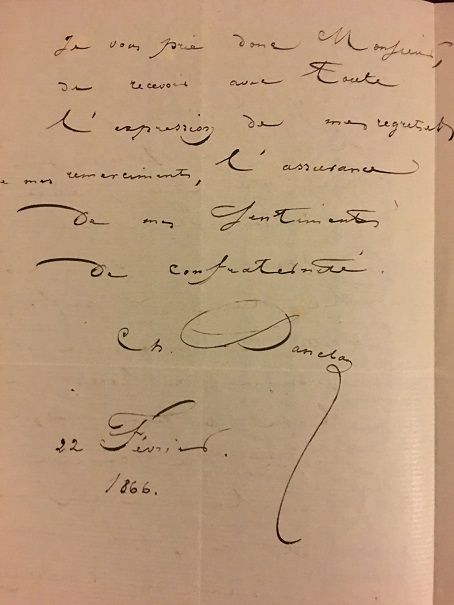
Charles Dancla (1817-1907) was one of the few people to have heard Paganini perform, who lived into the 20th century. He was in fact strongly influenced by Paganini, and taught at the Paris Conservatory for several decades. One of his most notable pupils was Maud Powell (1868-1920), an American violinist from Illinois who was one of the first widely-concertizing female violinists (her husband drove her around the United States frequently in their big old town car from city to city as she performed.) Although he wrote a lot of string music, he is known today only for his student compositions, namely the Airs and Variations, which were in several volumes of increasing difficulty. These were mostly based on themes from operas by Rossini, Mercadante, et al. Although they were designed for students, they are very effective recital numbers.
(Acquired 2008)
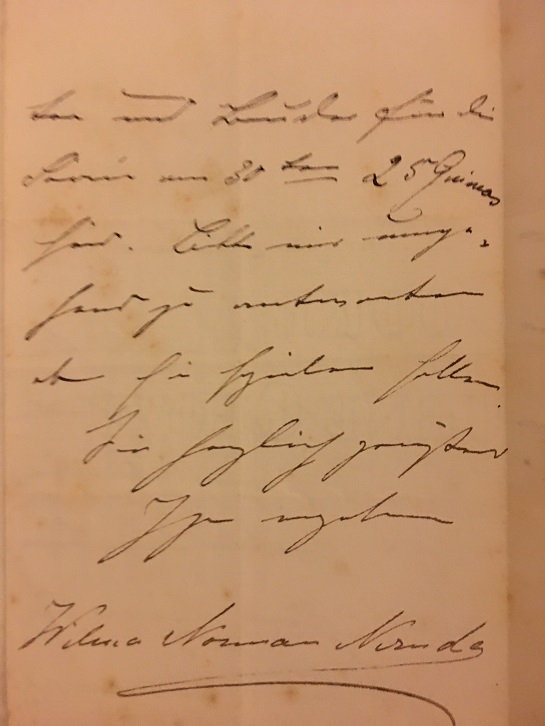
Wilhelmina Norman-Neruda, later known as Lady Halle (1938-1911) was among the pioneer women of the violin in the second half of the 1800s. She concertized widely and was the dedicatee of a number of works by Vieuxtemps, Sarasate, and other romantic violinist-composers of the day. She was an outstanding soloist, and even shared concerts with some of them, including Wieniawski.
(Acquired 2018.)
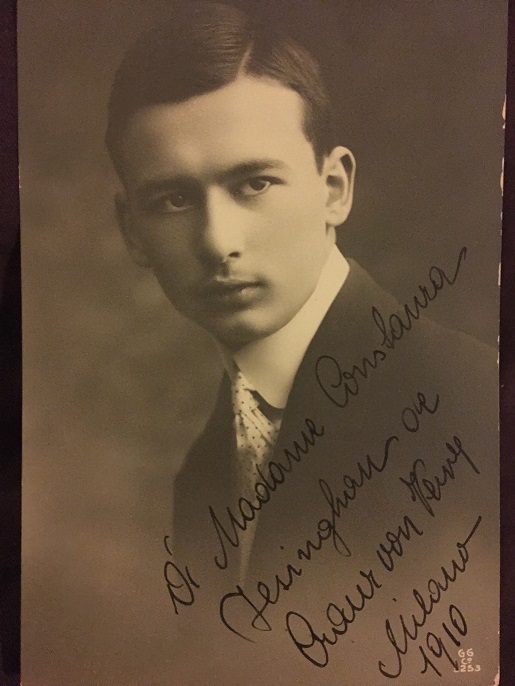
Ferenc "Franz" Von Vecsey (1893-1935) was a Hungarian violinist who, despite only being 12 years old at the time, received the dedication of Sibelius' Violin Concerto, which he performed throughout the rest of his life. He later turned to composing and conducting. The early 1900s were still primitive times as far as treatments for serious illnesses and Vecsey died far before his time.
(Acquired 2013.)
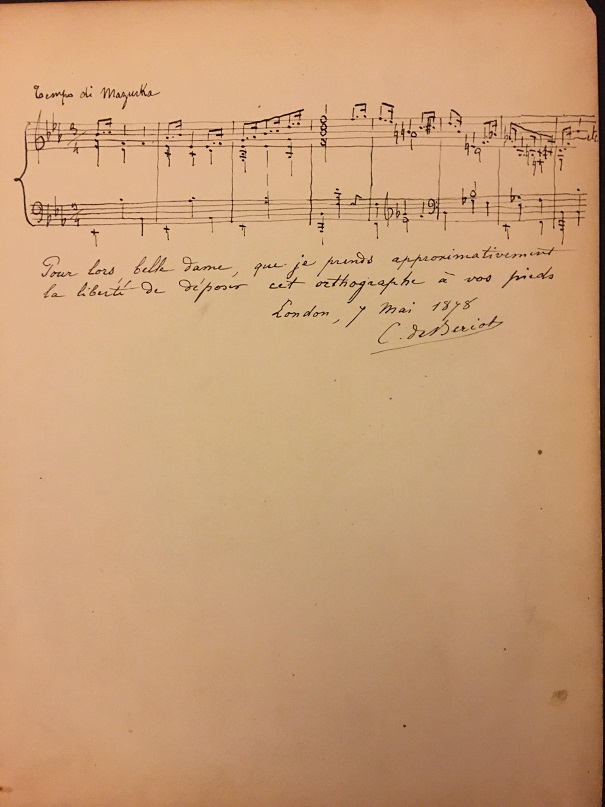
Charles de Beriot was a 19th century violinist, who unfortunately is not much known today for anything other than his student-type violin concertos frequently performed in student recitals. Musical quotation autographs usually sell for very big dollars. I was lucky enough to get this one for only about fifty US dollars.
(Acquired 2009)
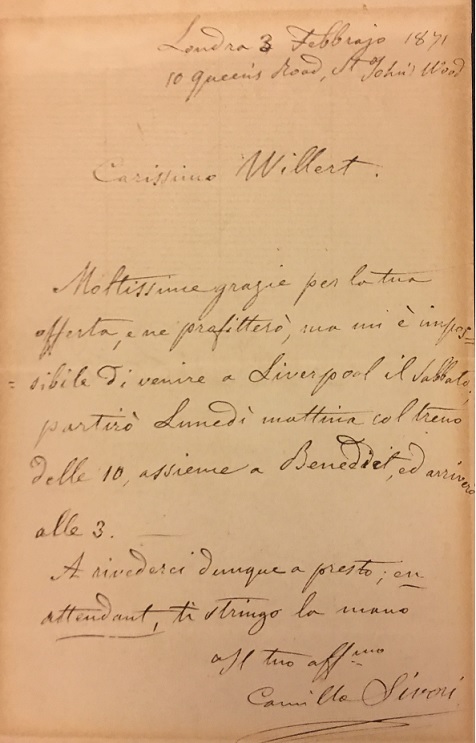
Ernesto Camillo Sivori was one of only a few pupils of Nicolo Paganini. Sivori later taught a man named Fortunato Francescatti, who in turn taught his son, the legendary Zino Francescatti.
(Acquired 2009)
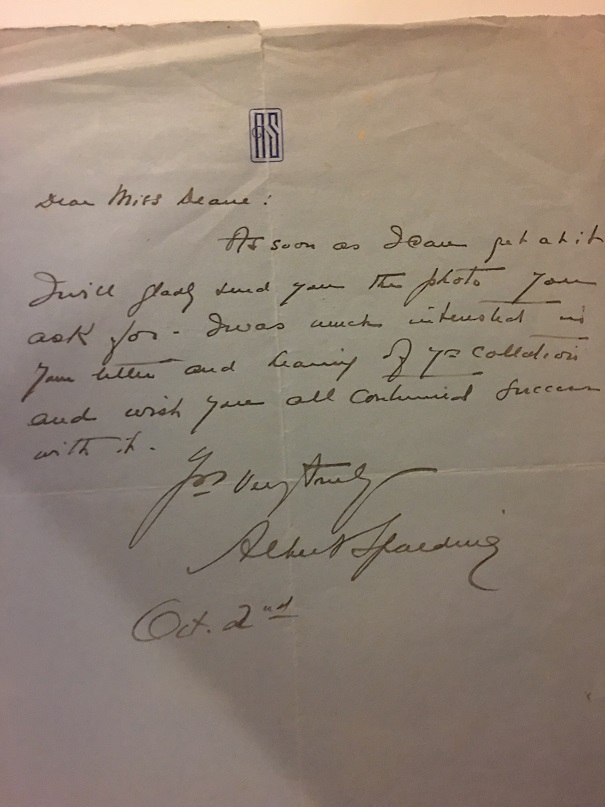
Albert Spalding (1888-1953), a family member and heir of the Spalding sports company, was an outstanding violinist. He premiered the Barber Violin Concerto in the early 1940s.
(Acquired 2019)
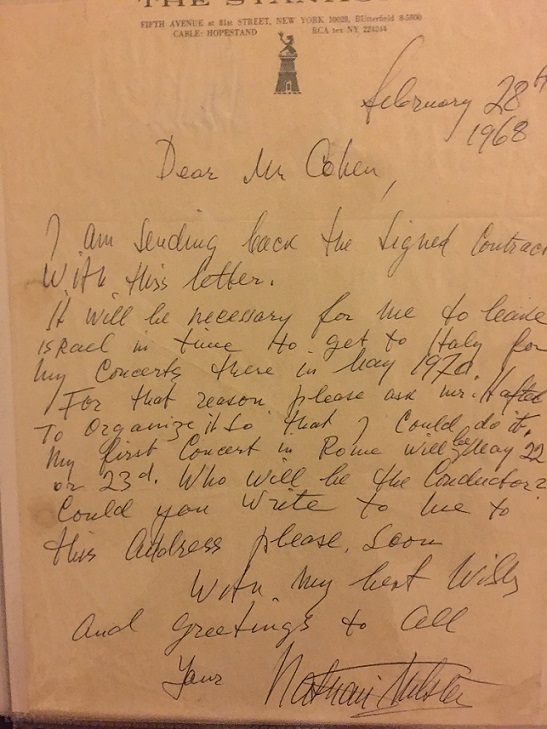
Nathan Milstein (1903-1992) was known as "the aristocrat of the violin." Many people believe he was more gifted than Heifetz. They studied with the same teacher, but they could not have been more different musically. Milstein's career lasted more than 70 years, from about 1914 when he played the Glazunov Concerto with the composer conducting, until his final recital performance in 1986 at age 82, which - thank God - was filmed. Not long after this, he suffered a broken hand, ending his career. His recordings of the Glazunov, Goldmark, Dvorak, and Brahms Concerti remain the definitive ones of those works.
(Acquired March, 2008)
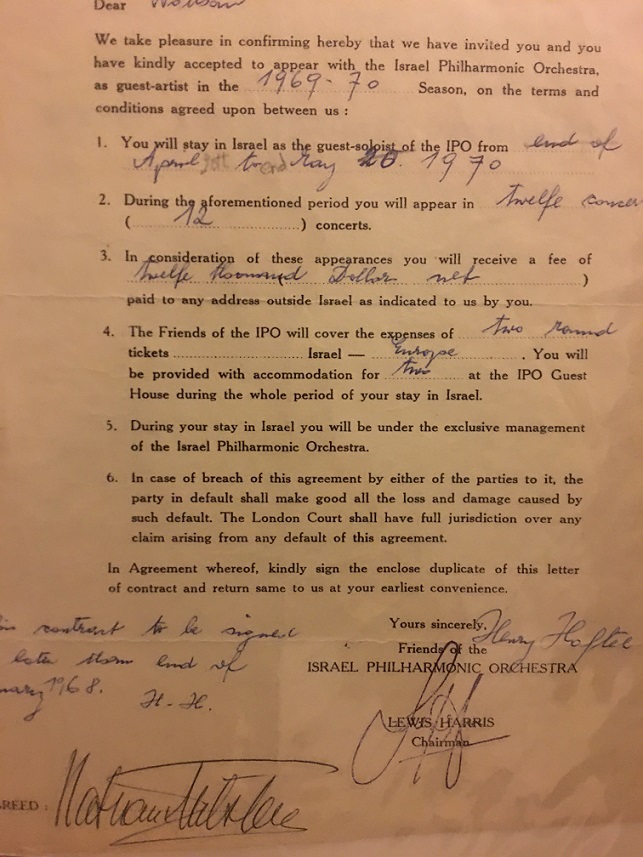
The contract mentioned in the letter above. Signed and agreed to!! At a fee of only $1,000 (net) per concert, the great Maestro was obviously performing these concerts mostly as a charitable donation to Israel. His usual fees were substantially more than this, although always well below what Heifetz and Rubinstein and some other asked for - and got.
(Acquired March, 2008)
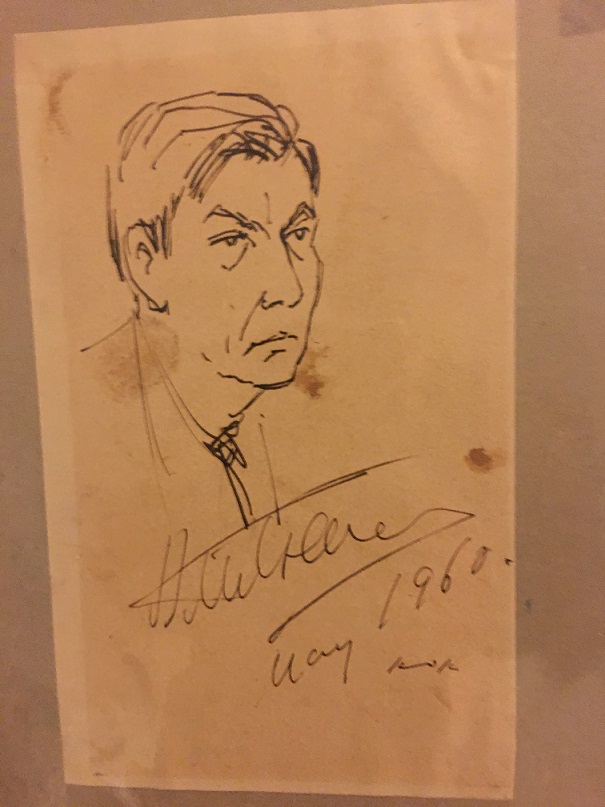
A sidewalk sketch of Milstein - or maybe sketched during a concert. Artist unknown. However, Milstein gave it his signature of approval. Dated 1960, he would've been about 56 years old when this was done.
(Acquired March, 2008)
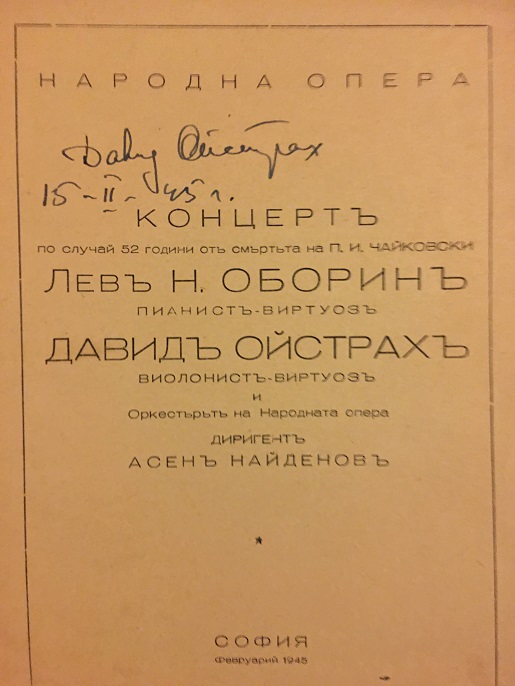
David Oistrakh (1908*-1974) was one of the several greatest talents to emerge from the former USSR. Virtually all of his studies were with a pedagogue named Stolyarsky, whom Milstein called "a very bad violinist, and a rather useless teacher." But like Milstein, it appears that Oistrakh was very much his own teacher. He won the second prize at the 1935 Wieniawski Competition, losing to Ginette Neveu. Two years later, he won the Queen Elizabeth Competition in Brussels, which launched a career that lasted almost 40 years. He maintained a rigorous concert schedule, which resulted in a serious decline in his health, and which led to a number of heart attacks, the last of which killed him. But despite this, he found time to teach a number of pupils who went on to substantial careers. He is the dedicatee of concerti by Khachaturian, Shostakovich, and other Soviet composers. Heifetz considered him very much his equal, and of Heifetz, Oistrakh said, "There are the rest of us, and then there is Heifetz." *Oistrakh was possibly born circa 1903.
(Acquired 2019.)
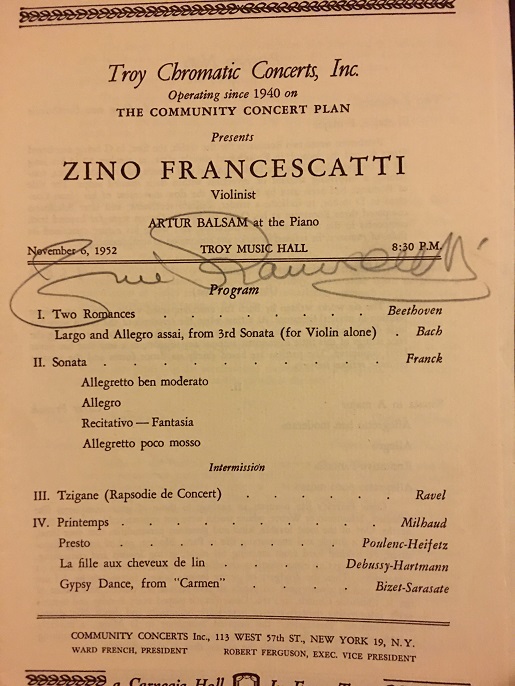
Zino Francescatti (1903-1991) was a French violinist who came from musical parents. His father was a pupil of Sivori, one of Paganini's VERY few pupils. His mother was also a violinist. However, he never performed in public with his parents - at least, after he became famous. Not that he wasn't willing, but somehow it just never worked out. Francescatti, today, is mostly known for his editing of numerous violin works, in the International Music Company catalogue. However, he was known as "Europe's answer to Heifetz."
(Acquired 2020)

Ferdinand David, a pupil of violinist-composer Ludwig Spohr, was one of the great early romantic era violinists. He premiered the Mendelssohn Concerto and came up with the initial fingerings and bowings of the piece that were used at that time by himself and a few others who were early players of this warhorse. He even played the Beethoven Concerto in a concert with Mendelssohn conducting! This letter is dated 1871, written in Leipzig.
(Acquired 2008)

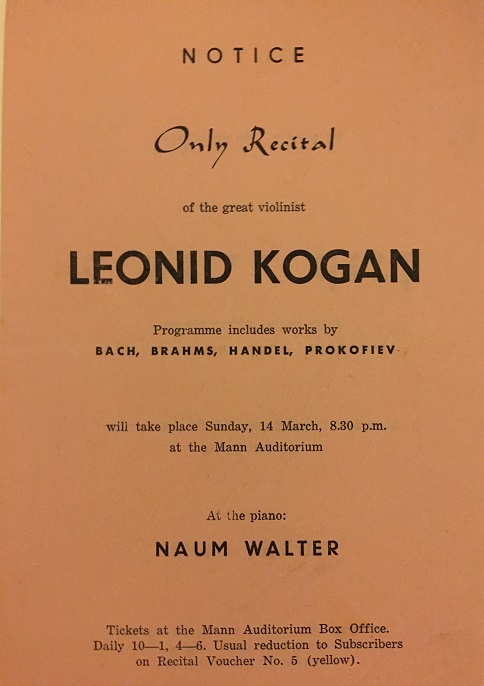
Leonid Kogan (1924-1982) was a professor of violin at the Moscow Conservatory, where David Oistrakh also taught while not on concert tours. Although 20 years younger than David Oistrakh, he shared the distinction of being one of the several finest violinists of the former Soviet Union. Reportedly he even studied with Oistrakh for a brief time. But violinistically, the two men could not have been more different. Kogan's interpretations were more modern-sounding, whereas Oistrakh's tended to be products of the romantic era. Kogan had a very narrow vibrato and had an agile bow arm that was well-equipped for Paganini, whose works he championed. He also had a facile left hand that, to quote one critic, "had such dexterity that he never had to 'get ready, get set' before executing the most difficult passagework." Kogan died prematurely of undiagnosed heart problems, while on a concert tour. Of all places, he died in the back of a train.
(Acquired 2008)
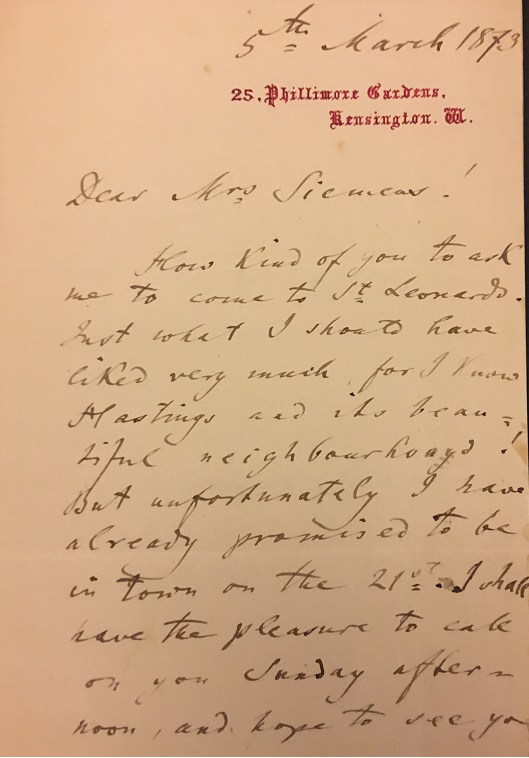
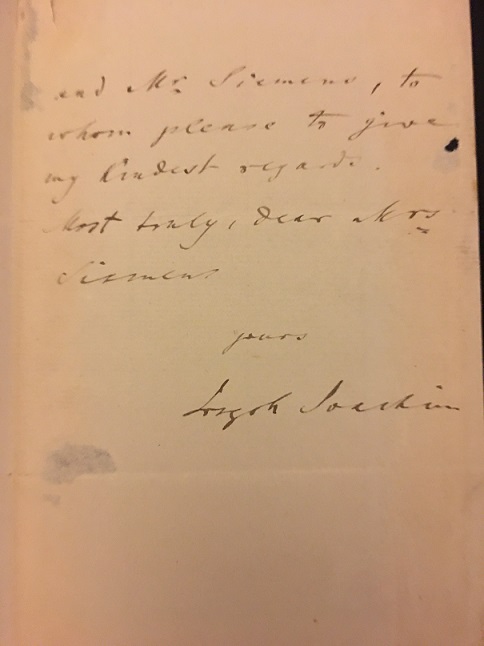
Joseph Joachim was one of the greatest violinists of the 19th century. He is the dedicatee of the Brahms Concerto (although he only performed it in public 6 times) and Bruch Concerto #1. Dvorak wanted to dedicate his Violin Concerto to Joachim but he wasn't interested in it. Joachim was a pupil of Ferdinand David, and Joachim taught Auer in the 1860s. Although Joachim was Hungarian, he was fluent in German and English, and possibly French.
(Acquired 2010)
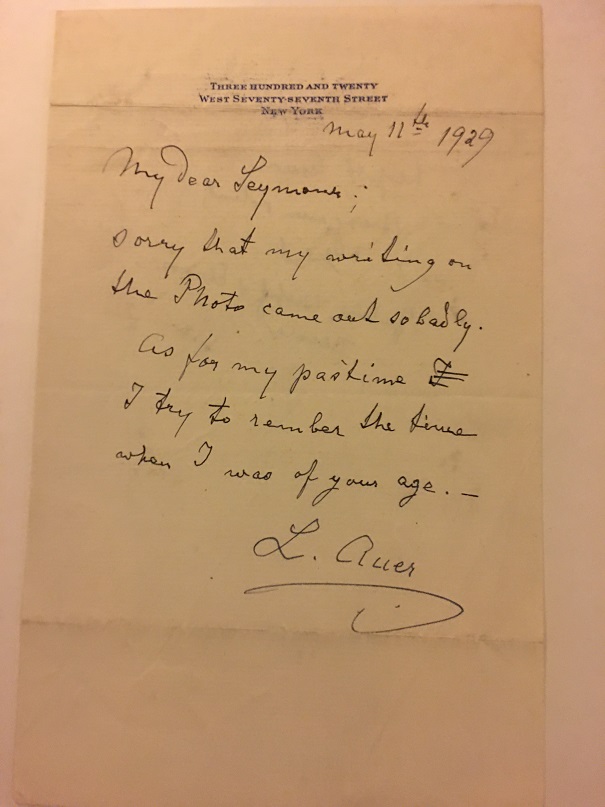
Joseph Joachim taught Leopold Auer (1845-1930) who came to him in Hanover in 1862 for lessons. Auer trained some of the greatest pedagogues of the 20th century - Heifetz, Milstein, Elman, Seidel, and many others who had long and successful careers. About Heifetz, he said, "He is not my student, he is a student of God." Of Milstein, he remarked to everyone in the room one time, "How do you like his Black Sea technique?!" Auer later emigrated to New York, where he charged a (then) stupendous $60.00 per hour for a lesson. He was a harsh taskmaster who accepted nothing less than the very highest performance level, even at lessons, which were usually open to the public. This letter was written just a year before he passed away. Heifetz played at his funeral.
(Acquired 2010)
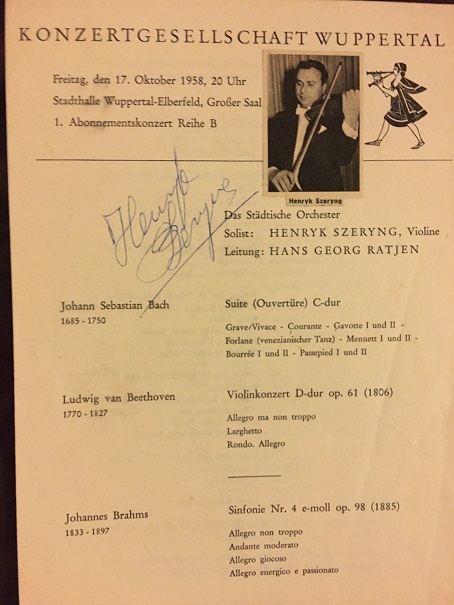
Henryk Szeryng (1918-1988) was a great virtuoso but his career did not begin until the early 1950s, when he was well over 30 years old. Although Polish-born, he was a Mexican citizen from 1946. He concertized up until the end of his life. The defining characteristic of his playing was its incredible robustness. However, it never had a strong personal note, and Itzhak Perlman said, "Whenever I heard some great violinist's recordings, and I didn't know who it was, it was usually Szeryng because it sounded like a blend of all the great violinists!" One of Szeryng's incredible achievements was resurrecting the 3rd and 4th concertos of Paganini, which he performed and recorded.
(Acquired 2008)
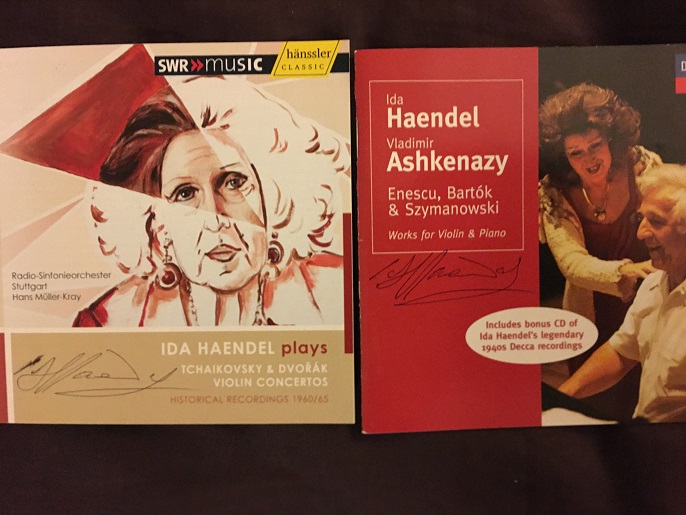
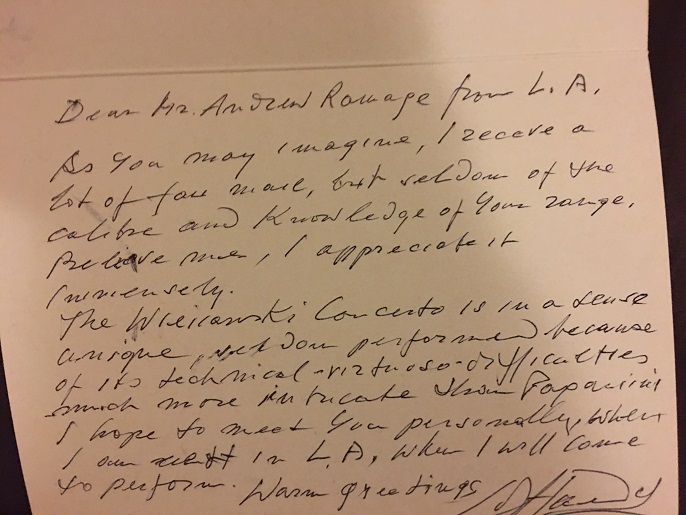
Ida Haendel (1923-2020) and Ivry Gitlis (1922-2020) were the two last survivors of the Carl Flesch violin class. Ida had one of the longest violin careers in recorded history - lasting more than eighty of her ninety-six years of life. At age 84 in 2008, she performed the enormously complex Enesco Sonata #3 (which she described as "truly gypsy") in Miami, where she made her home in later years. She was well-known as the definitive interpreter of this piece, having also studied with Enesco for a brief time. She also still had the stupendously difficult Wieniawski Violin Concerto #1 in her fingers well into her 80s. Walton, Britten, and Sibelius all praised her for her interpretations of their Violin Concerti, and to this day, no one has matched her Britten Concerto. Her storied career was, thankfully, documented in several documentaries. She was a most giving person, and said, "I don't teach - not willingly anyway - but I prefer to think of it as sharing. I like to share what I've done with a piece, with other people who might be interested."
(Acquired 2015)
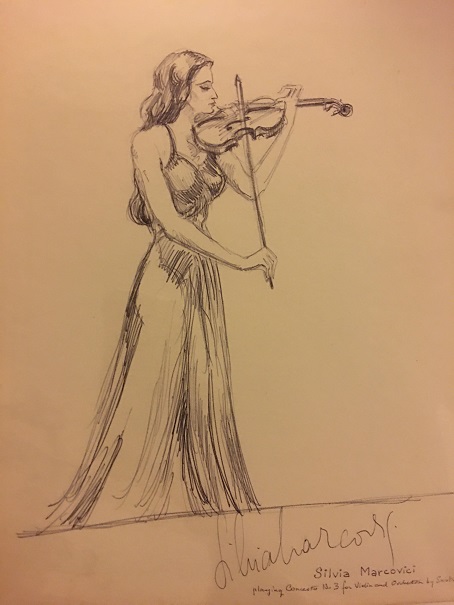
Silvia Marcovici (1952-) is a Roumanian violinist who concertized frequently around the world from the late 1960s until the early 2000s. She was a top prizewinner in the Enesco and Long-Thibaud Competitions, and in 1972 Decca records released a record of a live performance of the Glazunov Concerto with Stokowski, who had conducted the first performances of this concerto in the early 1900s. She has been on the faculty of several universities in Europe for many years. Although she did not record a lot, she remains well-known to a legion of violinists. Her playing was very similar to that of Szeryng and other European masters - she had a high bow arm and an absolute technique, which included a flawless left hand. This sketch was done during a concert and signed by her afterwards! I was fortunate to hear her a couple times in Oregon, when she performed with the Oregon Symphony in the late 80s and early 90s. She was very much liked in Oregon!!
(Acquired 2015)
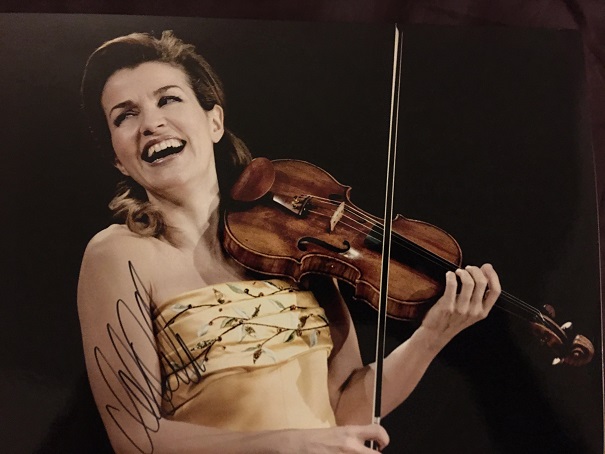
Anne-Sophie Mutter (1963-), the great German violinist, was a protege of the late Herbert von Karajan. As one of my old teachers said, "She lucked out; she got to record most of the big concerti with him." She has been a Deutsche Grammophon recording artist for many years, also having made some recordings of 20th century works by Stravinsky, Lutoslawski, Bartok, and others on that label. One of her 'hottest' albums, from 1994, was a disc of showpieces including the Sarasate "Carmen Fantasy." The same teacher said, "Married life hasn't quelled her musical vitality one iota!" She always said that she planned to fully retire from the concert stage by age 50, but she has not. Thankfully. She has taken special interests in younger violinists starting their careers in Europe. She revered the late Ida Haendel and they had a very special friendship.
(Acquired 2015)
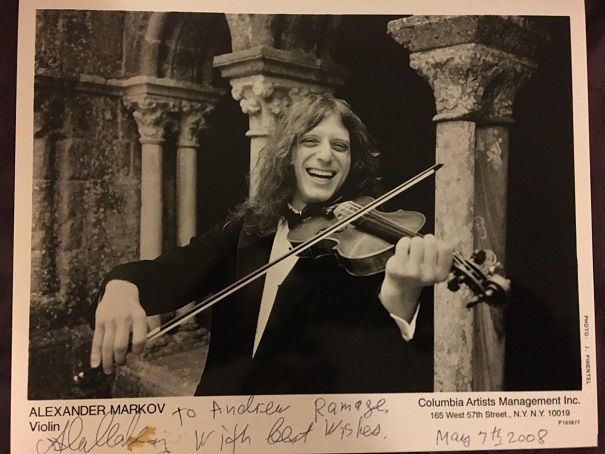
Alexander Markov (1959-) is a New York-based violinist who is one of the most charismatic on the concert stage today. At the young age of 29, he performed the 24 Paganini Caprices in Italy in a single program. The performance was filmed by Bruno Monsaingeon and released as a documentary on video. He is the son of the legendary pedagogue Albert Markov, who has taught in New York at the Manhattan School and elsewhere. The Markov family emigrated to the US in the 1970s.
(Acquired 2008)
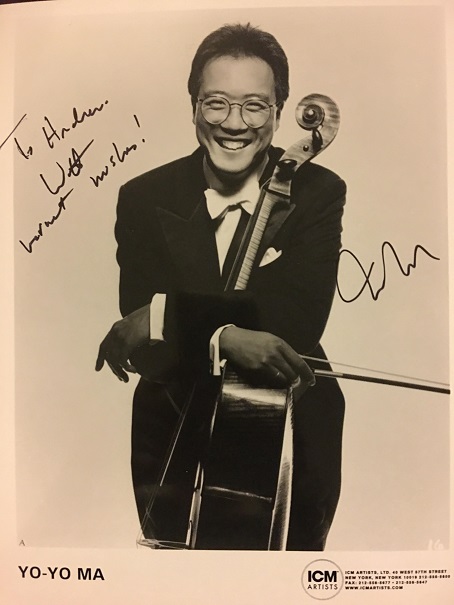
Yo Yo Ma (1955-) is probably the most popular cellist in history. In 1998, I heard him play an all-Bach recital, and then a month or two later, heard Rostropovich play the Dvorak Concerto in the same hall.
(Acquired 2008)
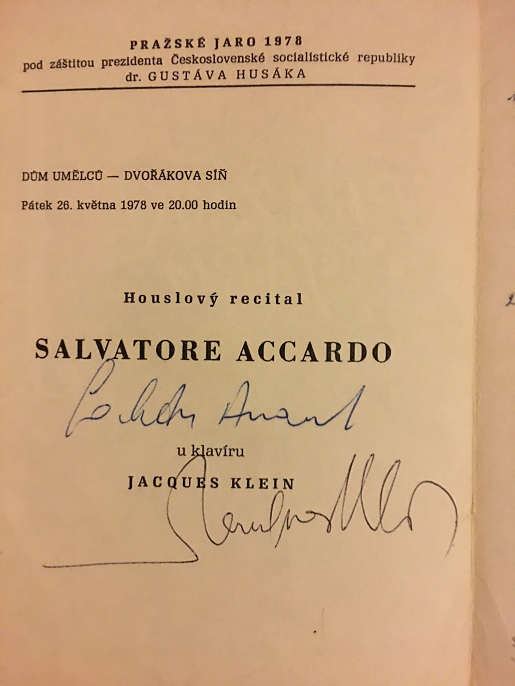
Salvatore Accardo (1941-), like Ricci and Kremer, is known as one of several Paganini specialists, and has unfortunately been unable to shake off that label. He came to prominence in his teens after winning a Paganini competition in Genoa. In the mid-1970s he recorded all six Paganini Concertos on the Deutsche Grammophon label, including #5 and #6 which were reconstructed from long-lost manuscripts. This program is from a recital where he played no Paganini! He recorded extensively for the Philips label, and some of his best recordings for Philips were the Bruch works for violin including the long-forgotten "In Memoriam", "Konzertstuck", "Adagio Appassionato", and the 3rd Violin Concerto.
(Acquired 2020)
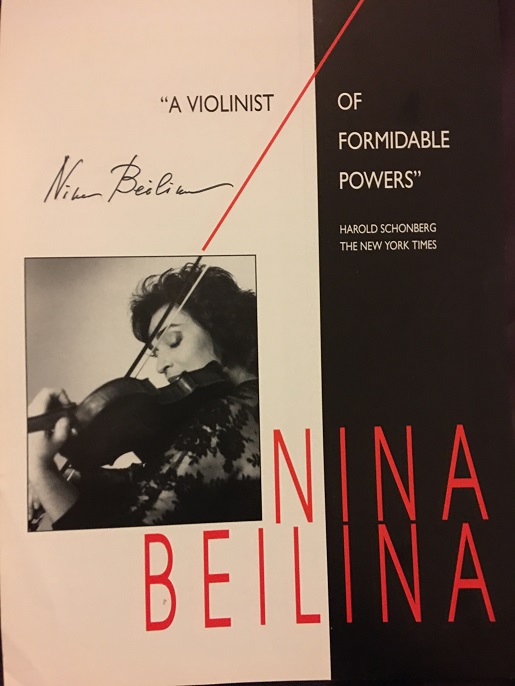
Nina Beilina (1937-2018) emigrated to the US in the 1970s from the former USSR and lived in New York. She founded the string ensemble Bacchanalia, of which she was the leader. A pupil of David Oistrakh, she - like many of his pupils - was a devoted teacher. One of my friends from the Pacific Northwest traveled once a month for a few years to New York for lessons. She also taught at the Mannes School of Music for many years. Her son, Emil "Micky" Chudnovsky, is a fine violinist who placed highly in several international competitions. Oistrakh heard him play when he was very young. Oistrakh told her, "I'm sorry, but you have a vioilnist on your hands!" Interestingly, Beilina was sometimes mistaken for Erica Morini (1904-1995), one of the greatest violinists of the 20th century but largely because of her gender, largely forgotten today. Indeed, the two ladies had a definite physical similarity. A fascinating documentary of Beilina's life was done some years before she passed away.
(Acquired 2019)
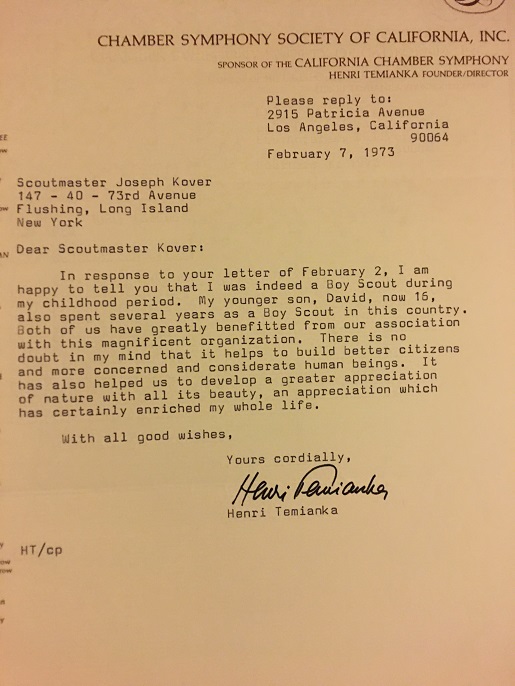
Henri Temianka (1906-1992) was a Polish-American violinist who spent a good number of years in Europe as one of the top concertizing violinists of the day, before making California his home and forming the Paganini Quartet (1946-66), and the California Chamber Symphony at UCLA (1960-circa 1983). He recorded a good number of works.
(Acquired 2021)
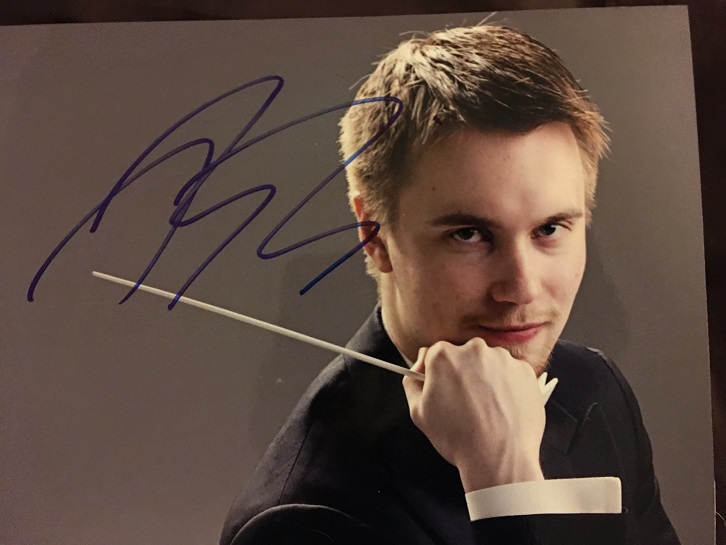
Pietari Inkinen (1980-) is a Finnish violinist and conductor. Since 2017 he has been the conductor of the Deutsche Radio Philharmonie. He conducted some performances with the Oregon Symphony some years ago as a guest conductor.
(Acquired 2008)
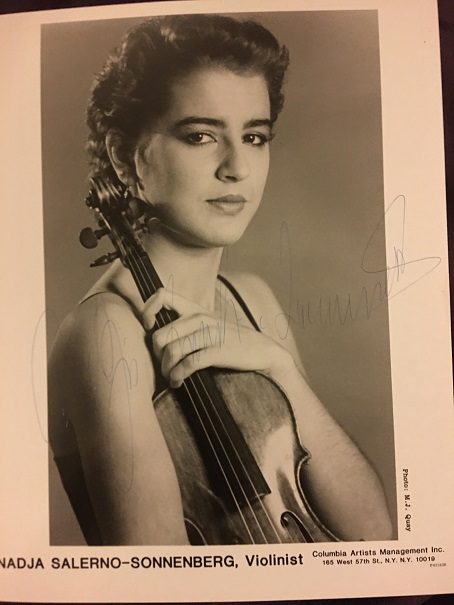
Nadja Salerno-Sonnenberg (1961-) was born in Rome, but moved with her family to the American east coast at a young age. Her first studies were at the Curtis Institute of Music, and later at Juilliard with Dorothy Delay. She credits Delay for her career; she was very rebellious, and at one point stopped bringing her violin to the lessons. Finally, Delay said words to the effect of, "Bring your violin next week, or this is over. If you want to waste your talent, I won't be a part of it." She went on to win a major competition, the Naumburg, which led to numerous concert engagements and a recording contract. Circa 2008, she ceased her frenzied solo career to take what she called "a new ride" as music director of the New Century Chamber Orchestra, which she held for many years. She then accepted her first professor post - Extraordinary Professor in 2015 at Loyola University in New Orleans, Louisiana. Her recordings of the Shostakovich and Barber Concertos remain two of the definitive ones of those works.
(Acquired 2008)
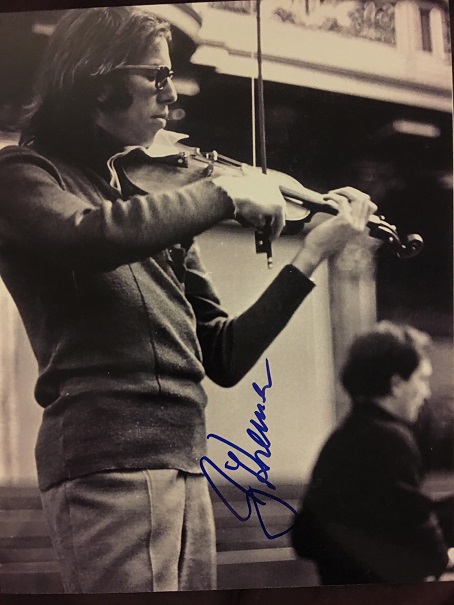
Gidon Kremer (1947-) is a Latvian violinist, well-known for his interpretations of some of the most difficult violin music ever written. His album "A Paganini", released by Deutsche Grammophon in 1985, firmly established him as one of the greatest living violin performers of that time. Some years later, he played the violin solos for the highly compelling Christopher Nupen film "Nicolo Paganini - A Most Enduring Legend."
(Acquired 2011)
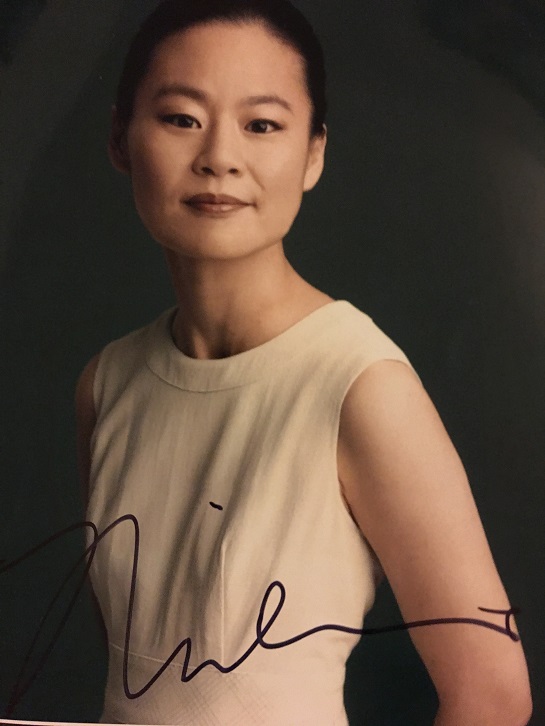
Midori (1971-) took the classical music world by storm in the early 1980s as not only a prodigy, but a great musical thinker. She went on to perform with all of the major league orchestras and conductors of the world.
(Acquired 2015)
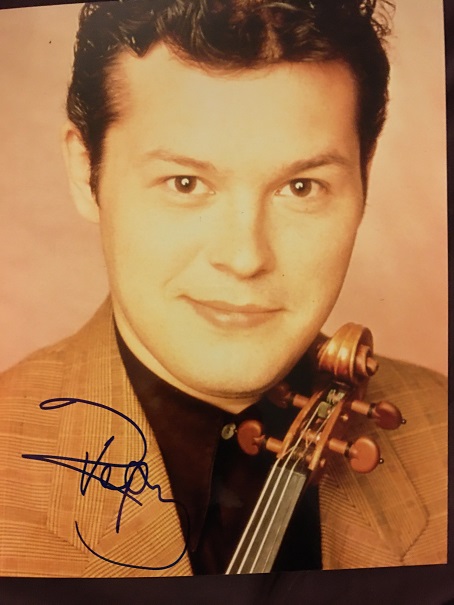
Vadim Repin (1971-) is a Soviet violinist who has spent most of his career performing and recording in Europe and Russia. He has not performed in the US much yet. He studied with the famed pedagogue Zakhar Bron, who has been responsible for training some of the greatest younger generation violinists including Vengerov, Chloe Hanslip, Ellinor d'Melon, and many others. Repin's recordings, both live and studio, are outstanding, particularly his sonata collaborations with Nikolai Lugansky, also on the Deutsche Grammophon label.
(Acquired 2011)
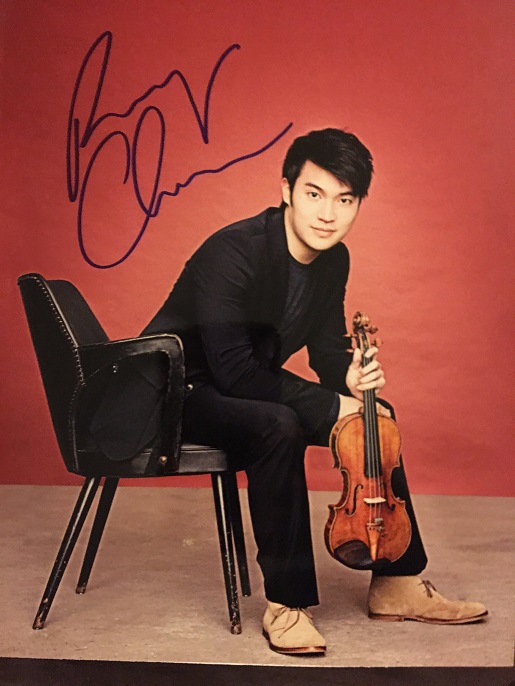
Ray Chen (1989-) is an Australian violinist. He won the Queen Elizabeth Competition in 2009, and was a pupil of Aaron Rosand - one of many successful Rosand pupils.
(Acquired 2011)
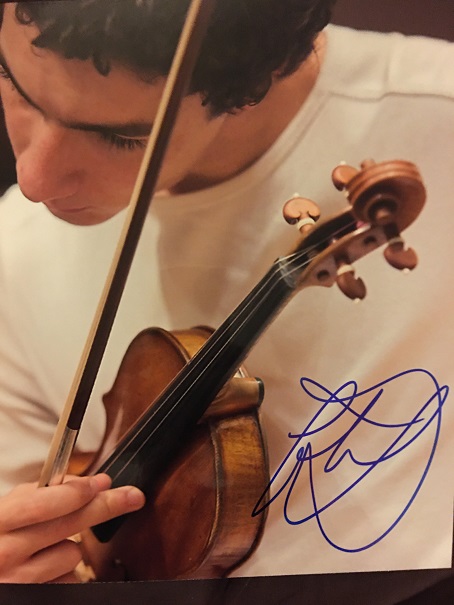
Sergei Khachatryan (1985-) is an Armenian violinist who has made some fine recordings. He is not to be confused with the composer of almost the same name, Khachaturian. Like Repin, he has not performed a lot in the US but hopefully will in the future. He has recorded some sonatas from the Cold War era with his sister Lusine, pianist.
(Acquired 2011)
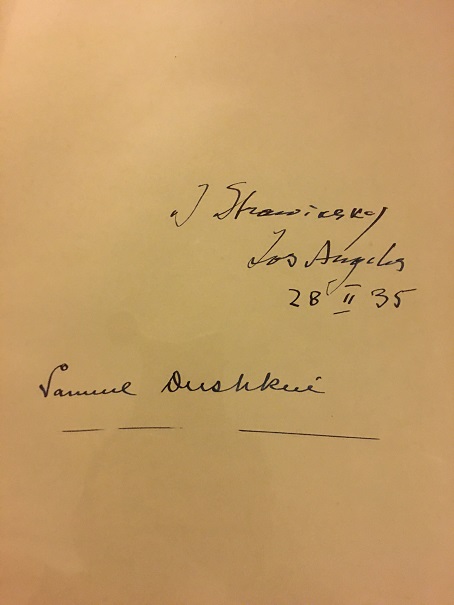
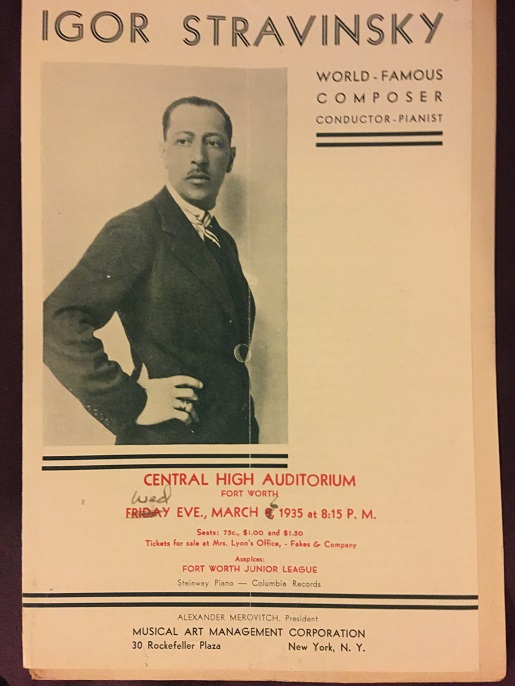
Igor Stravinsky (1882-1971) and Samuel Dushkin (1891-1976) toured the United States in 1935 as a violin-piano duo, performing the transcriptions that Stravinsky did of his orchestral works. It was at this point in the composer's life that he decided that he would eventually move to the United States. And he did, in 1939. Then the war broke out. When Pearl Harbor was bombed, he became worried and asked Dushkin, "Where should I go now?!" He had previously lived in Europe, mostly Paris, after leaving Russia in 1910. By the time he and his wife, Vera, came to the US, Stravinsky had lost his first wife, eldest daughter, and mother all in Paris, within a year of each other.
(Acquired 2011)
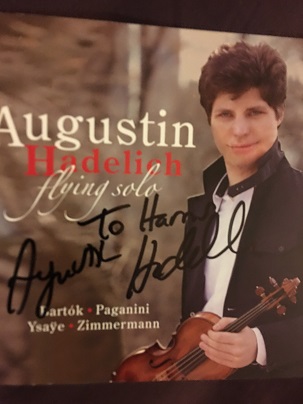
Augustin Hadelich (1984-) is one of the top younger generation violinists of today. He has performed regularly since childhood. Born in Germany, he came to the US to study at Juilliard, and he graduated in the early 2000s. An accident in 1999 when he was 15 sidelined him for a year. He is also a highly accomplished pianist who has recorded violin pieces as his own piano accompanist. His repertoire includes the complicated Violin Concerto by Benjamin Britten. His popular "Ask Augustin" series of technical question videos, posed by violin students, is on Youtube. One reviewer said, "Hadelich belongs on the short list of the greatest violinists of these times." Indeed, he is a magnificent artist and a very warm personality.
(Acquired 2021)
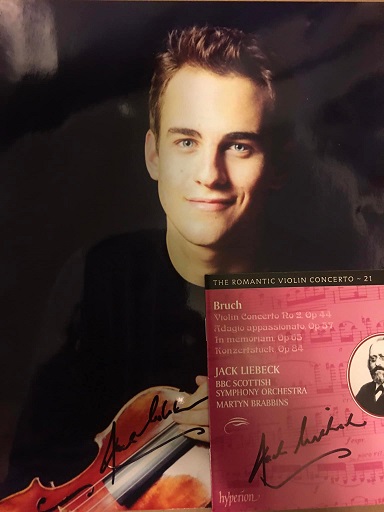
Jack Liebeck, born in 1980, is the Emile Sauret Professor of Violin at the Royal Academy of Music in London and in 2022 appointed director of the Australian Festival of Chamber Music. His recordings of the complete works of Max Bruch was a major accomplishment, and only done by one other violinist (Salvatore Accardo.) Liebeck is a British-German violinist who began his musical career as a singer. He did not start playing the violin until the later age of 8 years old, and not long after that, he decided to build his musical career around the violin. In addition to the standard repertoire, he has also recorded and performed a lot of obscure great works including the violin-piano sonata and Quintet of Frank Bridge. He has also performed the violin solo parts in several big films.
(Acquired 2022)
Contact
Please send email to socalviolin1985@gmail.com.*If you don't get a response within 24 hours, please re-send your message. We'll get back to you ASAP. Thank you!
